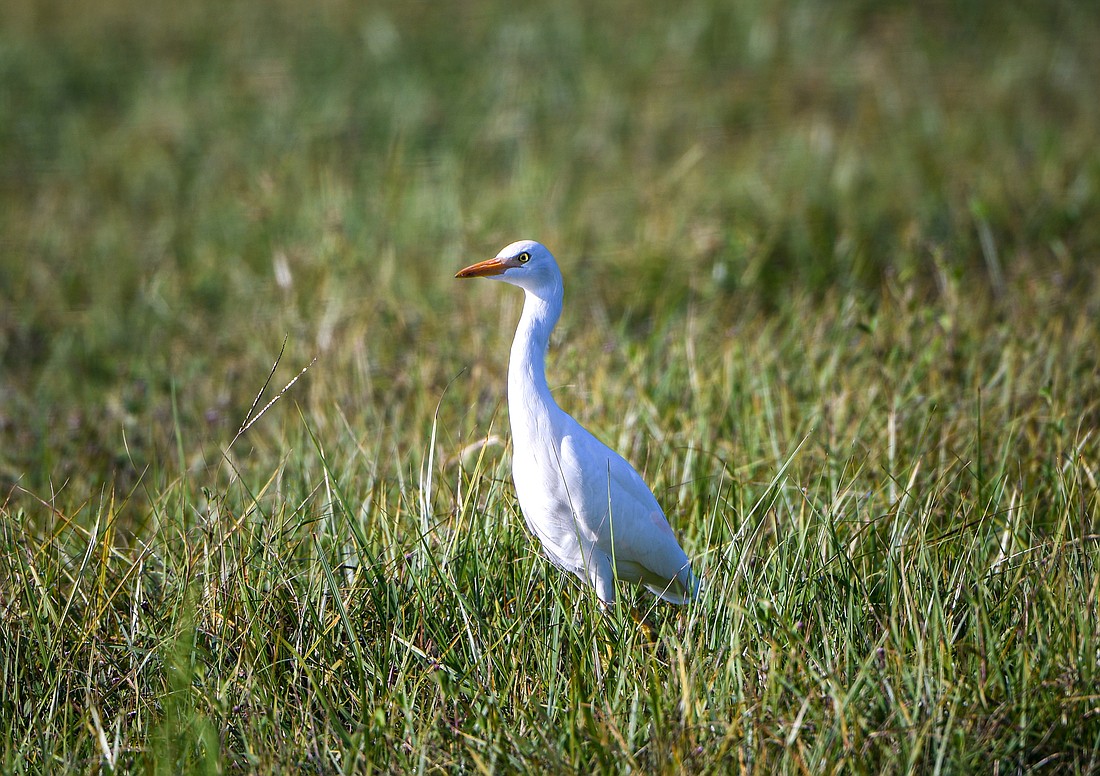- April 26, 2024
-
-
Loading

Loading

With their short, thick bills and stocky white bodies, cattle egret can be spotted foraging on ranches and agricultural fields.
Unlike other members of the heron family, these opportunistic feeders do not forage in water. They feed in upland habitats, often closely following behind cattle, tractors or mowers, capturing insect. By doing so, it is estimated that they are able to gather 50% more food, using only two-thirds as much energy, compared to finding prey on their own.
Cattle egret are not native to the United States. Originally from Africa, they arrived in Florida in the 1940s. These highly adaptable birds have since successfully colonized much of the world.
Whether a non-native, or exotic, species is considered invasive largely depends on how they behave in their new home. When they arrive, on their own volition (as was the case with cattle egrets), or introduced by humans, some species simply cannot adapt and don't survive. Others thrive, and, without natural predators, they out-compete native species for food and habitats, in which case they are considered invasive. And yet others find an empty niche, where they do not compete with existing species, and therefore seemingly have little detrimental effect on their new environment.
With their diet of most insects, cattle egrets don't compete with native herons and egrets for food.
Their large-scale and rapid range expansion is due to their adaptation to a terrestrial existence through their relationship with humans, and their domesticated animals. In Florida, cattle egrets thrive in our cattle ranches and farmlands. Conversion of such lands to other uses would result in loss of habitat for this abundant species.
Save our Seabirds is a non-profit organization whose mission is to rescue and rehabilitate sick and injured birds, releasing as many as they can, while educating our community about avoiding injuries and preserving habitats.